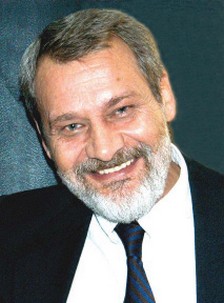
Milan Mihajlović (1945, Serbia) earned BA degrees in composition and conducting (S. Rajičić and Ž. Zdravković, 1970) and an MA degree in composition (S. Rajičić, 1978) at the Academy of Music in Belgrade; he was further educated at summer courses in Cologne and Salzburg. He taught subjects in music theory at the Faculty of Music Art (from 1975); then he was promoted to full professorship at the Faculty of Music Art in Belgrade and the Academy of Arts in Novi Sad. He was a co-founder of the Ensemble for Contemporary Music, director of the International Review of Composers (1992–2002), and president of the Composers’ Association of Serbia (1978–2002). He has authored a theoretical study of modality in the music of Aleksandr Skriabin, Skrjabinov modus (Skriabin’s Mode), and a textbook on music analysis, Muzički oblici (Musical Forms, 1988).
Mihajlović has won numerous awards for his works: the Stevan Hristić Award (1970), the BEMUS Award (1972), the October Prize of the City of Belgrade (1984), two first prizes at the International Review of Composers (in 1992 and 1996), the Mokranjac Award (1994), and the April Award of the City of Belgrade (2003). His works are often performed at home and abroad, attracting the attention of first-rate artists – Aleksandar Serdar, Sreten Krstić, Ksenija Janković, and many others – and his work Preludium, Aria e Finale was published by Edition Peters of Leipzig. Mihajlović’s works are often performed in Serbia and abroad, across Europe, in America and Australia, at venues such as the Tonhalle in Zurich, Carnegie Hall in New York, the hall of the Berlin Philharmonic, Steinway Hall in London, and others.
Major works by Milan Mihajlović include the following: the symphonic works Preludio, Aria e Finale (1972), Simfonijske metamorfoze (Symphonic Metamorphoses, 1977), Bagatele (Bagatelles, 1986) for violin, string orchestra, and harpsichord, Elegija (Elegy, 1989) for string orchestra, Memento (1993) for a symphonic orchestra, Silenzio (1996) for women’s choir and chamber orchestra, a setting of Torquato Tasso’s poetry, Povratak (The Return, 2002) for violoncello and symphonic orchestra, Senke snova i mora (Shadows of Dreams and the Sea, 2011), and Fa-mi(ly) (2013) for piano and string orchestra; the chamber pieces Lamentoso for clarinet, violin, and piano (1977), Notturni for French horn, wind and string quartet (1983), Mala žalobna muzika (Little Funeral Music, 1990), Tri prelida (Three Preludes, 1986–1989) for piano, and Zeleni talasi (Green Waves, 2009) for four harps.
Memento, a symphonic piece by Milan Mihajlović, was written in 1993 on a commission from the BEMUS festival and dedicated to Vasilije Mokranjac, the great Serbian symphonist, whose life had ended tragically in 1984. Memento was performed at the openings of the 25th BEMUS (1993), the Third International Review of Composers (Belgrade, 1994), Mokranjac Days (Negotin, 1994), World Music Days in Slovenia (2003), at concerts solely dedicated to his music (2005 and 2009), and in Jena in 2010. The work has been performed by the Belgrade Philharmonic Orchestra, conducted by Konstantin Krimec, Mladen Jagušt, Bojan Suđić, Mihajlović himself, and Frank Kramer, who then conducted the Jena performance. The Slovene Philharmonic’s performance was conducted by Uroš Lajovic. A sound recording of the piece was included in both CD compilations of Mihajlović’s works (1995 and 2005).
The architectural logic of this piece by Mihajlović is clear and unambiguous: there is an exposition with two contrasting sections, a development, a (variant) ‘recapitulation’ (in essence, another development with an overall culmination), and a coda. The opening section is complex; it brings a group of themes and contrasting material of an idyllic world that evokes the innocence of childhood, the world of sounds ‘captured’ in wondrous little music boxes, and a phantasmagorical world portrayed by the orchestra’s unsettling arpeggiation of a single chord, which infuses the idyll with discomfort, foreboding, and fear. It is not only a contrast in terms of orchestral colours, the melodic and harmonic principles, a long poly-motivic section and a condensed, static one, but primarily an unsettling shift in the flow, which unfolds in the magic of the number three (the three strikes of the triangle at the opening, three-note motives, three-bar repetitions) and an unexpected duple four-bar structure that stops the natural logic of the foregoing evolutionary process of motivic growth. These motives give rise to chords of unrest (as a vertical projection of the foregoing musical flow), which become the sonic basis for presenting the choral motive in bass instruments of each orchestral group and the motive of the scream, which comes to dominate the development section. At no point does the process of transformation in the material come to a halt; in the quasi-recapitulation, the motives from both worlds are juxtaposed in a new way and the tension building up achieves no resolution, not even at the moment of culmination, because the expected diatonic conclusion of the culminating chorale is thwarted and a ‘reconciliation’ of sorts occurs only in the coda.


